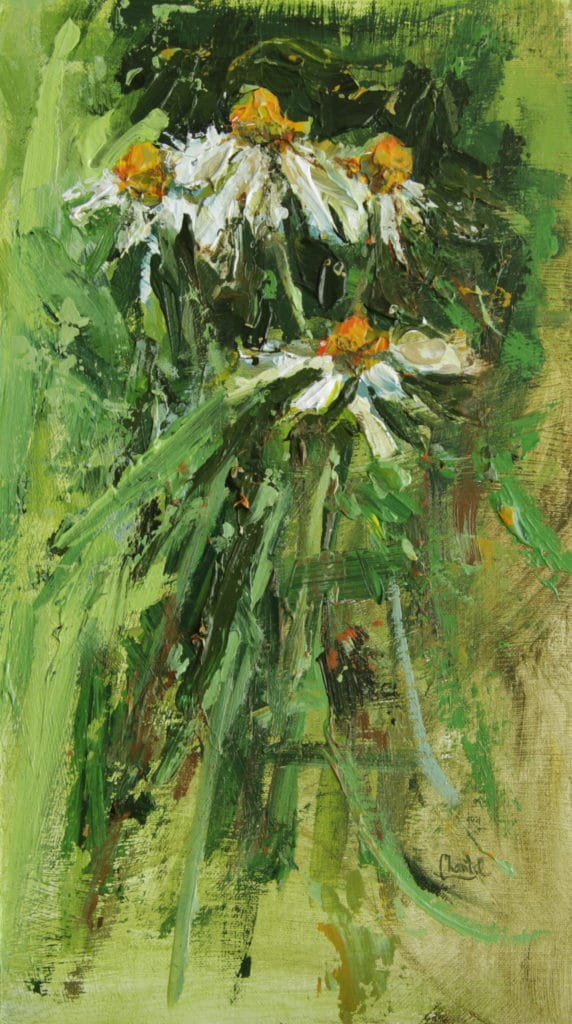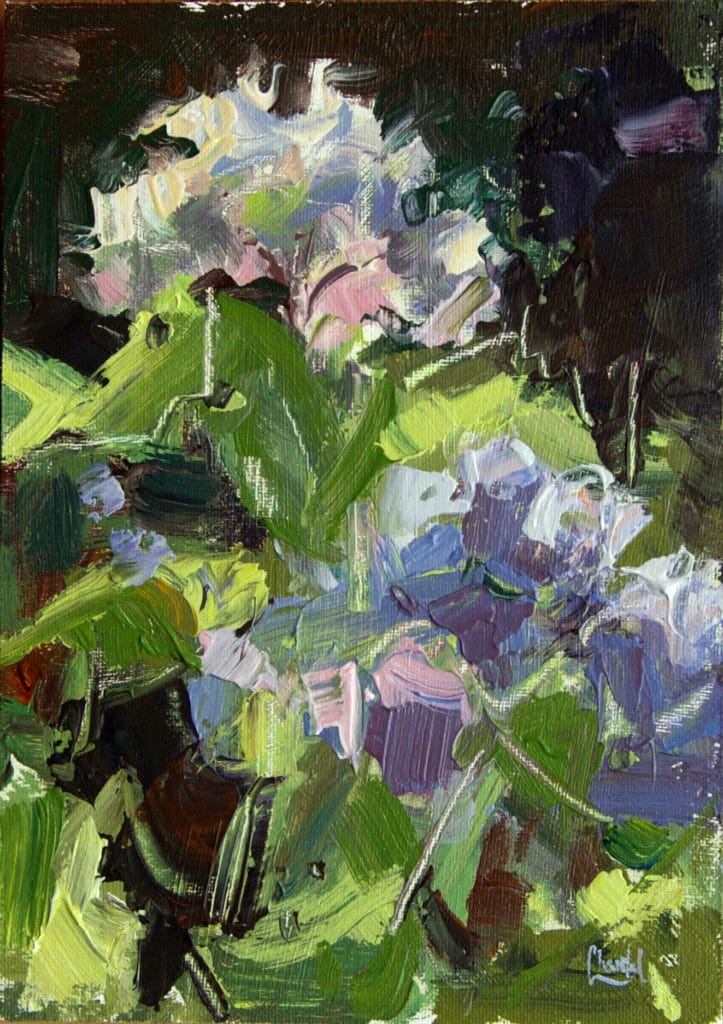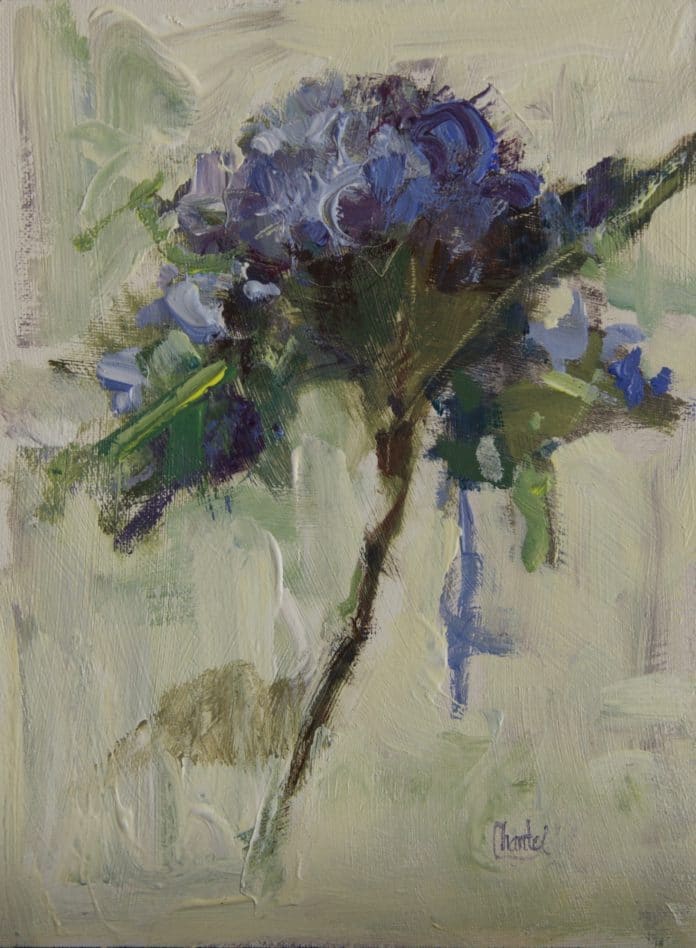The qualities of acrylic don’t have to be a disadvantage en plein air. How?
By Chantel Barber
(chantellynnbarber.com)
I was taught to paint in oil as a teenager. In 1990, I took a semester of painting where acrylic was the primary medium. Funny thing — I never remember being taught how to use acrylic. Coming from oils, I felt like I had been dropped off on Mars without any survival tools. There was something I loved about acrylic, though, and I didn’t want to give it up.
The hard part was finding artists who could teach me to paint the way I wanted to paint with acrylic. They didn’t exist, or at least I couldn’t find them. Everything I know about acrylic was learned from 25 years of working with it. Any workshops I took were from oil painters. I would ask ahead of time if I could work in acrylic, and I would then adapt their techniques. I share all this because it helps to understand the way I currently approach acrylic, whether in the studio or painting en plein air.

I typically use a Sta-Wet palette in the studio to keep my Golden Heavy Body Acrylic moist and workable. I like the consistency of the paint to stay as close to “fresh from the tube” as possible. I favor Heavy Body Acrylic because it allows for a thicker impasto look. However, when working in acrylic outdoors, it can be a hassle to take along the sponge, paper, and water that makes this system effective. So here is what I have found makes for successful plein air painting:
I use a limited palette of Golden Open Acrylic, which stays open on a disposable palette. The surfaces I paint on have been textured with my favorite gesso to add more substance to the acrylic paint. The painting is begun using the Open Acrylic, and once I am ready for the luscious thick strokes of paint, I simply mix Heavy Body Acrylic with the Open. I also add passages of highlights, etc., with pure Heavy Body paint.

The quick dry time of acrylic can become an advantage instead of a disadvantage. Cool effects can be achieved by lifting passages of paint that are already dry with a wet paper towel. Most of the problems people struggle with when using acrylic involve their inability to control edges. Once they are offered ways to vary their edges, it all becomes a whole lot easier. Acrylic allows for such easy cleanup. It is easy to transport, too, because the painting dries so quickly.
This article was featured in PleinAir Today, a weekly e-newsletter from PleinAir magazine. To start receiving PleinAir Today for free, click here. This article was originally published in 2017.
This article is sponsored by the Liliedahl Art Video Workshop, “Chantel Barber: Painting from Photos“
.






I’ve been using golden open acrylics since I was introduced to them several years ago and really enjoy them. Recently I’ve been pushing myself to paint en plein air and began using water-soluble oils… Definitely a learning curve. After reading your article though, I’m motivated to try the open acrylics paired with the heavy body acrylics. I, too, love those ‘luscious thick strokes of paint’! Thank you for sharing your thoughts and experience!
So are you saying that you control the edges by using both Open acrylics and wet paper towels? Getting those soft edges and blending while still wet are two issues I’m currently having with acrylics.